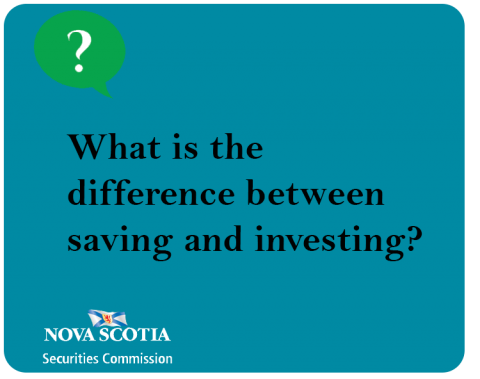Submitted by nsscadmin on

The words saving and investing are often used interchangeably, despite the fact they are two very different things.
First let’s talk saving. Saving is setting aside money that you haven’t spent for emergencies or a future purchase. This is often placed in a low interest savings account or could even be in a jar or envelope in your dresser. This money is easy to access with little or no risk behind it. This money is easily accessible and often used for an emergency fund for unexpected expenses such as a car or home repair or change in employment, or a purchase such as a vacation.
Now, what about investing? Investing is making your money work for you by purchasing assets, such as stocks, bonds, mutual funds or other investment vehicles with the expectation that these investments will make money for you over time. Investing is usually for the long-term and is money you will not need or try to use for a long period of time. For this reason, many investments can be more difficult to access and come with some level of risk. Money invested is often used for a longer-term financial goal such as a new car, retirement or education.
Let’s look at an example of the difference between someone saving $2,000 and someone investing $2,000.
In our saving example the $2,000 is deposited in a savings account that pays two per cent interest annually. After five years the balance in your account would be $2,319.
In our investing example the same $2,000 is invested in different investment vehicles and averages seven per cent interest annually. After five years your account balance would be $2,806.
The difference of $487 doesn’t seem like a lot, but remember, we said investing is typically for the long term. Using the same examples what would the difference be after 10 years, or 25 years? Well, in our savings example, after 10 years you would have $2,688 and after 25 years you would have $4,188. In our investing example, after 10 years you would have $3,955 and after 25 years you would have $10,855.
One thing to remember as well, with investing there’s no guarantee you will receive the same seven per cent return each year. Some years it could be more, some years it could be less. Some years you may not make any money at all. That’s the risk you take. However, the reward is knowing that overtime you’ll likely earn more than if you’re simply saving.
